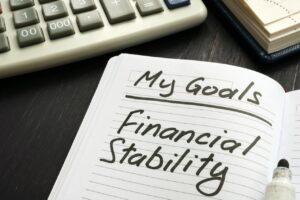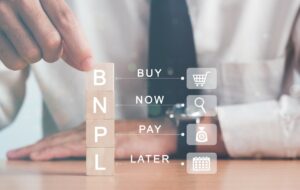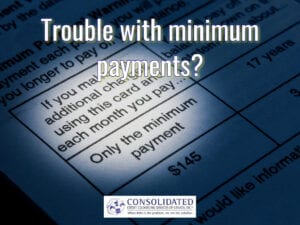In Canada, we’re fortunate to have a wide variety of credit products available to us. It can be challenging to navigate which option is best with so many at our disposal. One of them is a credit card cash advance, but how do they work and when does it make sense to use them? In this article, we’ll explore that and more.
What is a credit card cash advance?
A cash advance is a short-term loan from a lender. While banks and other financial lenders offer cash advances, most often their done using a credit card. There is a fee to use this service. Often, cash advances are used in times of emergencies. For instance, this could be an unexpected medical expense or home repair.
How do credit card cash advances work?
There are a number of ways to get cash advances. Getting one from your credit card is one of the simplest ways. Let’s say you find a leak in your basement that requires emergency repair. The cost is $500 and you don’t have enough in your personal savings. To cover the cost, you withdraw a cash advance from your credit card. Just like that, your new credit card balance now goes up by $500.
Be aware, it’s not free money. It comes at a cost. A hefty one. For access to that cash, you’ll pay a cash advance fee, as well as, any interest charges that accrue from the new balance on the credit card. For this reason, it’s best to only rely on them in times of need.
Rates
In Canada, the standard interest rate on a credit card is between 19% and 20%. However, cash advances are subject to higher interest rates, usually around 24%. In addition, interest begins accruing on cash advances immediately. Whereas with other credit card charges, interest only accrues when you fail to make a payment on time and in full.
In addition to interest, there is usually a one-time fee to process a cash advance. Usually, this is between 3% and 5% of the transaction amount. Finally, if you’re processing your cash advance at an ATM, you might incur a transaction fee there too.
How to get a cash advance
Cash advances can be processed by calling your bank, visiting your bank, performing the transaction online, or going to an ATM. In some cases, if you have cheques for your credit card, you can use one to withdraw cash. Usually, the service is quite straightforward and can be done within a few minutes.
Other transactions that are ‘cash advances’
Typically, a transaction is only considered a cash advance when you’re drawing down cash from your credit card. That’s a bit misleading. There are cases where other types of transactions may be considered cash advances. Watch out for these transactions on your credit card because they could be subject to a high annual percentage rate and a cash advance fee:
- Transfers to or through platforms like PayPal, MoneyGram or Venmo
- Foreign currency purchases
- Payment of debt or bills that would normally be paid with cash
- Purchase of casino chips or lottery tickets
Be sure to read the fine print of your credit card agreement to determine what’s considered a cash advance.
How to pay off a cash advance
You can pay off a credit card cash advance the same way you pay your credit card bill.
Unlike other transactions on your credit card, cash advances begin accruing interest immediately. For this reason, you should aim to pay down the cash advance, plus your minimum payments, as soon as possible. This way you’ll reduce the impact of interest.
Cash advance pros
- Available at any time, as long as you have enough room left on your credit card
- Collateral not required
- No credit check or application needed
Cash advance cons
- High interest and fees
- Cash advances don’t count toward a credit card reward program
- They can impact your credit score negatively if taking the advance leads to a high credit utilization ratio or missed payments
- No grace period
Alternatives to a cash advance
Cash advances have their benefits, but you may want to consider alternatives before moving forward. Here’s a list of a few alternatives to cash advances:
Personal loan
While it might take a bit longer to secure a personal loan, the cost of borrowing is usually much lower. You also have the option of unsecured or secured personal loans.
Line of credit
A line of credit has low interest and flexible repayment terms. In addition, once you have a line of credit, you can use it continuously.
Savings
Consider tapping into retirement or another savings source to cover the cost. However, avoid drawing down from your Registered Retirement Savings Plan (RRSP) because it’ll be costly and a tax headache.
Borrow from friends and/or family
Consider asking for a loan from friends and/or family. Chances are they won’t charge interest and will offer you flexible repayment terms.
Negotiate a payment plan
For large, emergency expenses, vendors often understand that you might not have the cash on hand. Try to pay what you can upfront then negotiate a payment plan for the rest with the vendor. If the vendor agrees to a payment plan, be sure to follow it!
When to use a cash advance
Cash advances are ideal in situations when you need cash immediately. Often, these are emergency situations. Typically, cash advances are used for costs under $1,000. This is because cash advances should be repaid in the short term to avoid high interest. If you need more than that, you might not have the room on your credit card. It will also be cheaper to find financing elsewhere if the cost is much more expensive.
When not to use a cash advance
Cash advances should not be used for regular expenses. If you are considering the use of a cash advance for day-to-day expenses, you might be headed toward financial trouble. If you have the time and means to access cheaper forms of financing, such as a personal loan or line of credit, steer away from cash advances being your first choice.
Cash advances and you
Credit card cash advances are a useful tool in times of need. However, they are expensive and should only be used for emergencies. If you’re relying on cash advances from credit card companies or aren’t sure how to manage credit card debt, Consolidated Credit Canada is here to help. Reach out for a free consultation today!




